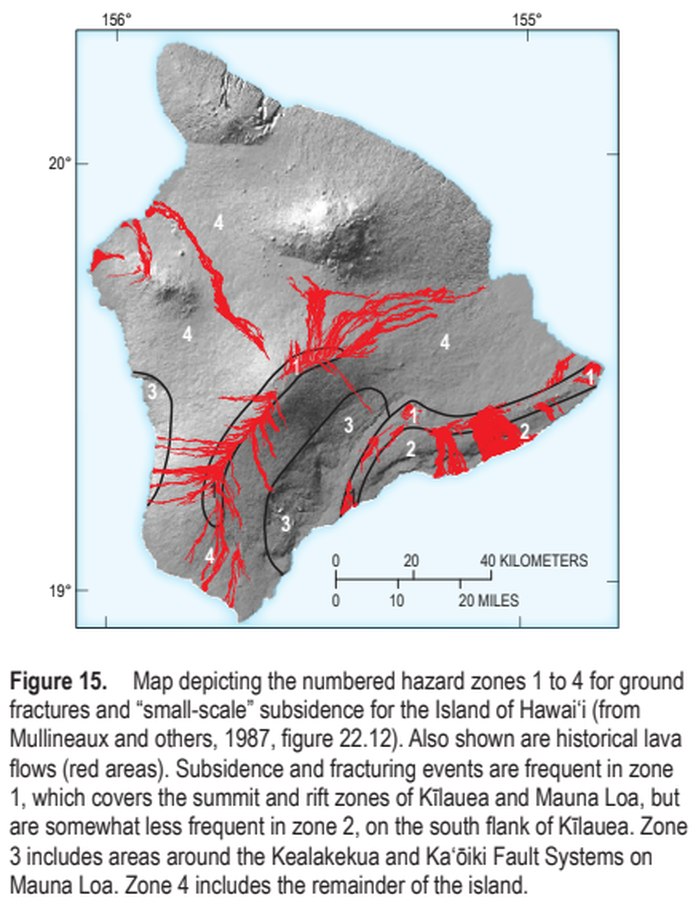Map depicting the numbered hazard zones 1 to 4 for ground fractures and “small-scale” subsidence for the Island of Hawai‘i
Hawai‘i (regional), United States, 2014
Figure 15 in: Kauahikaua, J.P. & Tilling, R.I. (2014). Natural hazards and risk reduction in Hawai‘i. In: Poland, M.P., Takahashi, T.J., & Landowski, C.M. (eds.) Characteristics of Hawaiian Volcanoes. US Geological Survey Professional Paper 1801, p. 397-427. https://doi.org/10.3133/pp180110
This map was produced by an official agency, but may not be the most recent, most complete, or main operational map.
For the current operational hazard map, please consult the proper institutional authorities.

Click on image for full-size map. If link seems broken, try the archived version.
Kauahikaua, J.P. & Tilling, R.I. (2014). Natural hazards and risk reduction in Hawai‘i. In: Poland, M.P., Takahashi, T.J., & Landowski, C.M. (eds.) Characteristics of Hawaiian Volcanoes. US Geological Survey Professional Paper 1801, p. 397-427. https://doi.org/10.3133/pp180110Map Set
https://doi.org/10.3133/pp180110
Other Maps In Set:
Map Data
Map ID 3745 Hazard Process(es) Deformation hazards Hazard Zone Presentation Single hazard: A single hazard process is represented on a main map panel Temporal Scale Background, or long-term, map Spatial Scale Island Publication Format Figure in a journal article Zonation Method(s) Derived/simplified from another map Zonation Model(s) Scenario(s) Considered Source location or direction Hazard Zone Label(s) Qualitative relative probability (e.g. high-medium-low) Probability Definition(s) Qualitative relative probability (e.g. high-medium-low) Purpose Scientific interest: Intended for scientific research and general scientific interest; usually published in academic journals Audience Scientists (usually in scientific publication) Language(s) English Basemap(s) Hillshade Basemap overlay(s) Diemsionality Planimetric (2D or map) view Color Scheme Symbols and/or lines only
